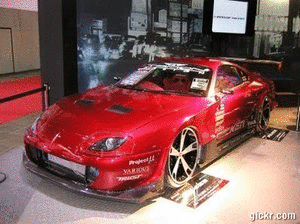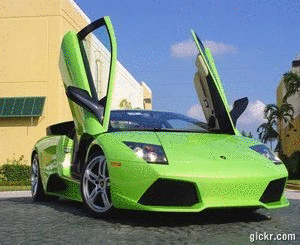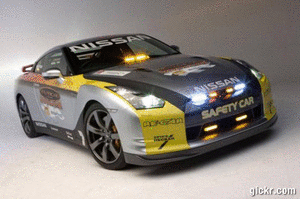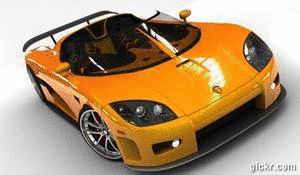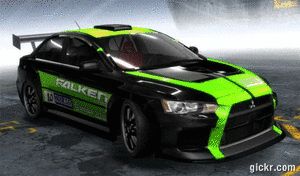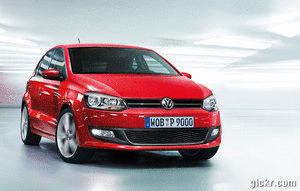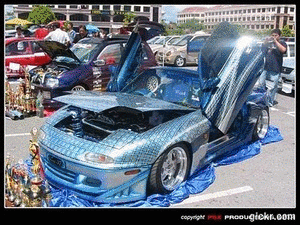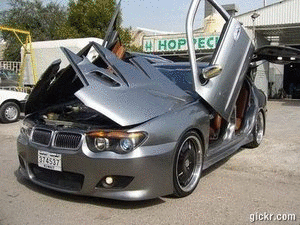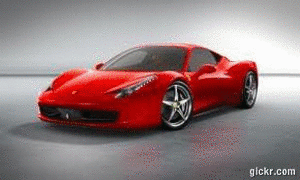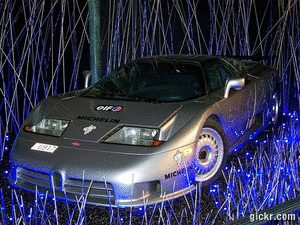SW20/SW21) 1994 MK-II Toyota MR2 SW20
Production: 1989-1999
Body style(s): 2-door coupé or T-top
Layout:MR layout
Engine(s):Toyota S engine
2.2L 130 hp (97 kW) I4 (US, UK)
2.0L 165 PS (121 kW; 163 hp) I4 (Japan, Australia, UK)
2.0L 180 PS (130 kW; 180 hp) I4 (Japan, Australia, UK)
2.0L 200 PS (150 kW; 200 hp) I4 (Japan)
2.0L 200 hp (150 kW) Turbocharged I4 (US)
2.0L 225 PS (165 kW; 222 hp) Turbocharged I4 (Japan)
2.0L 245 PS (180 kW; 242 hp) Turbocharged I4 (Japan)
Transmission: 4-speed automatic, 5-speed S54 or E153 manual
Wheelbase: 94.5 in (2,400 mm)
Length 164.2 in (4,171 mm)
Width 66.9 in (1,699 mm)
Height 48.6 in (1,234 mm)
Curb weight 2,789 lb (1,265 kg)
Designer Kazutoshi Arima
Tadashi Nakagawa (roadster)
 The second generation MR2 (MKII) went through a complete redesign in 1989; the wheelbase had been increased by 3.2 inches (81 mm), making it 94.5 inches, the overall length had been increased by 9.3 inches (240 mm), making it 164.2 inches (4,170 mm) and is 66.9 inches (1,700 mm) wide. The new MR2 weighed 350 to 400 pounds (160 to 180 kg) more than its predecessor and had smoother bodylines. It appeared very advanced for its era. Now that the MR2 was larger, it could be classed as a GT car. The 1990 model year MSRP ranged from approximately ¥1,953,330 (€13,896), ($14,368) to ¥2,522,960 (€17,882), ($18,558). Since the resemblance between the Ferrari 348tb and the Ferrari F355 and the new MR2 was quite striking, the MKII is sometimes referred to as a "poor man's" Ferrari. Indeed, many bodykits became available to make the MKII imitate the Ferrari F355 with, sometimes, almost indistinguishable results.
The second generation MR2 (MKII) went through a complete redesign in 1989; the wheelbase had been increased by 3.2 inches (81 mm), making it 94.5 inches, the overall length had been increased by 9.3 inches (240 mm), making it 164.2 inches (4,170 mm) and is 66.9 inches (1,700 mm) wide. The new MR2 weighed 350 to 400 pounds (160 to 180 kg) more than its predecessor and had smoother bodylines. It appeared very advanced for its era. Now that the MR2 was larger, it could be classed as a GT car. The 1990 model year MSRP ranged from approximately ¥1,953,330 (€13,896), ($14,368) to ¥2,522,960 (€17,882), ($18,558). Since the resemblance between the Ferrari 348tb and the Ferrari F355 and the new MR2 was quite striking, the MKII is sometimes referred to as a "poor man's" Ferrari. Indeed, many bodykits became available to make the MKII imitate the Ferrari F355 with, sometimes, almost indistinguishable results.The MKII MR2 came to the Japanese (JDM) and European market at the end of 1989 as a 1990 model year. Japan received three trim-levels;
1. G-Limited with a naturally aspirated engine (N/A) 2.0L 3S-GE engine producing 165PS (163hp/121 kW), an automatic transmission was standard, a manual transmission was optional. The G-Limited has basically all the bells and whistles an MR2 can have. Climate control, Power folding Mirrors, Steerable Fog Lamps, etc.
2. GT with a turbocharged 2.0L 3S-GTE engine producing (261 hp/), a M/T was the only choice.
3. GT-S, it came with the same engine and transmission as the GT.
The European market also received three trim-levels;
1. Coupe with the N/A 2.0L 3S-FE engine producing 138 hp (103 kW).
2. GT Coupe with the N/A 2.0L 3S-GE engine producing 158 hp (118 kW).
3. GT T-Bar with the N/A 2.0L 3S-GE engine producing 158 hp (118 kW).
 There were no turbo models officially imported to the European market, however many Japanese models were imported via the grey market. The U.S. did not get an MR2 for the 1990 model year. In 1991 Toyota introduced the MKII MR2 to the U.S. in two trim-levels;
There were no turbo models officially imported to the European market, however many Japanese models were imported via the grey market. The U.S. did not get an MR2 for the 1990 model year. In 1991 Toyota introduced the MKII MR2 to the U.S. in two trim-levels;1. MR2 N/A with a N/A 2.2L 5S-FE engine producing 130 hp (up to 135 hp (101 kW) in 1993) and an A/T or M/T optional.
2. MR2 Turbo with a turbocharged 2.0L 3S-GTE engine producing 200 hp (149 kW), the only choice for a transmission being a 5-speed M/T.
There are many visual differences between the MR2 N/A and MR2 Turbo models which are much more noticiable to the owner of an MR2 Turbo: some include the “turbo” emblem (USDM) on the rear trunk, a fiberglass engine bonnet with “raised” vents, fog lights (some JDM and EU N/A models came with fog lights), and an added interior center storage compartment located between the two seats. All MKII’s came with a staggered wheel setup, which was slightly wider in the rear. In the U.S. there are two different chassis codes, SW21 for the MR2 N/A model and SW22 for the MR2 Turbo model, as opposed to the usual SW20 reference.
Mechanical differences between the NA and Turbo models include, but are not limited to: Turbo model received the more powerful 3S-GTE engine with its associated intercooler and different exhaust system, a more powerful fuel pump, larger brakes, a larger radiator, larger rear axles which also required different hubs, and a different transmission (E153) vs the NA S54 transmission.
 The MKII MR2 was offered with three different engine choices all together depending on the market area. All engines were 2.0 liter I4 engines with DOHC and 16 valves, except for the US MR2 N/A model which used the 2.2 liter 5S-FE engine. The most powerful engine was the turbocharged 3S-GTE, which was rated at 261 hp) JDM (as the MR2 GT and 240 hp (179 kW) as the GT-S) and 200 hp (150kW) USDM (as the MR2 Turbo). Europeans had to settle for the naturally-aspirated 156 horsepower (116 kW) 3S-GE engine (in the Coupe) or the 118 horsepower (88 kW) 3S-FE engine (in the GT coupe and GT T-bar). The JDM MR2's (GT and GT-S model) had the 3S-GTE engine that produced (261 hp) and was able to accelerate from 0-100 km/h in 5.6 s. The USDM MR2 Turbo model was able to accelerate from 0-60 in 6.1 seconds and run the 1/4 mile in 14.7 seconds. The 3S-GTE was also used in the Celica Celica All-Trac/GT4
The MKII MR2 was offered with three different engine choices all together depending on the market area. All engines were 2.0 liter I4 engines with DOHC and 16 valves, except for the US MR2 N/A model which used the 2.2 liter 5S-FE engine. The most powerful engine was the turbocharged 3S-GTE, which was rated at 261 hp) JDM (as the MR2 GT and 240 hp (179 kW) as the GT-S) and 200 hp (150kW) USDM (as the MR2 Turbo). Europeans had to settle for the naturally-aspirated 156 horsepower (116 kW) 3S-GE engine (in the Coupe) or the 118 horsepower (88 kW) 3S-FE engine (in the GT coupe and GT T-bar). The JDM MR2's (GT and GT-S model) had the 3S-GTE engine that produced (261 hp) and was able to accelerate from 0-100 km/h in 5.6 s. The USDM MR2 Turbo model was able to accelerate from 0-60 in 6.1 seconds and run the 1/4 mile in 14.7 seconds. The 3S-GTE was also used in the Celica Celica All-Trac/GT4 In early 1992 (for the 1993 models), Toyota changed the rear suspension geometry for both the NA and Turbo models. The rear toe rods (that control the toe-in of the rear tires) were lengthened substantially, and the inner pivot point for the toe rod was relocated on the cross-member. At the front, the geometry did not change but the construction of the attachment of the front control arms were changed. Springs that lowered the ride height at both the front and rear were installed, and the anti-roll or sway bars were increased in diameter (Turbo model only?). The wheels were changed from 14" diameter to a 5 spoke cast aluminum 15" diameter wheel. The increase in size was mainly to accommodate larger brakes on the Turbo model. The tire sizes were also increased in width at both the front and rear on both the NA and Turbo models. These changes to the suspension geometry and tire sizes were made in response to journalist reports in their reviews of the MR2 that the car would "snap-oversteer". As a counterpoint to the snap-oversteer phenomenon of the MR2, other journalists point out that most mid-engine and rear engine sports and super cars exhibit similar behaviour, and that a change to the driver's response to oversteer is really the problem, and not the fault of the car. Nevertheless, Toyota elected to change the MR2 suspension and tires so that the car became more docile and "neutral" in its over- and under- steer characteristics. Other refinements in 1993 are a slightly revised electrical system (for example, the speedometer became fully electronic vs. the earlier cable drive version), and a shorter shifter lever and smaller shifter knob. For the 3S-GTE minor mechanical changes were made, but power did not change. The boost engine cut sensor was changed to allow for a maximum boost of 17-18 psi, vs the earlier switch that shut down the engine at over 12 psi boost. The engine computer did not allow more than 12 psi boost, so the change in the boost cut switch is only of interest to aftermarket tuners. The 1993 model year also offered a Limited Slip Differential (viscous type, with 40% lockup) as an option on Turbo models only. The transmission was changed internally with additional synchromeshes on the lower gears which allows for smoother shifting, again on Turbo models. Externally, the front lip was changed to a new shape that increased downforce at the front. The external mirrors were color keyed as well.
In early 1992 (for the 1993 models), Toyota changed the rear suspension geometry for both the NA and Turbo models. The rear toe rods (that control the toe-in of the rear tires) were lengthened substantially, and the inner pivot point for the toe rod was relocated on the cross-member. At the front, the geometry did not change but the construction of the attachment of the front control arms were changed. Springs that lowered the ride height at both the front and rear were installed, and the anti-roll or sway bars were increased in diameter (Turbo model only?). The wheels were changed from 14" diameter to a 5 spoke cast aluminum 15" diameter wheel. The increase in size was mainly to accommodate larger brakes on the Turbo model. The tire sizes were also increased in width at both the front and rear on both the NA and Turbo models. These changes to the suspension geometry and tire sizes were made in response to journalist reports in their reviews of the MR2 that the car would "snap-oversteer". As a counterpoint to the snap-oversteer phenomenon of the MR2, other journalists point out that most mid-engine and rear engine sports and super cars exhibit similar behaviour, and that a change to the driver's response to oversteer is really the problem, and not the fault of the car. Nevertheless, Toyota elected to change the MR2 suspension and tires so that the car became more docile and "neutral" in its over- and under- steer characteristics. Other refinements in 1993 are a slightly revised electrical system (for example, the speedometer became fully electronic vs. the earlier cable drive version), and a shorter shifter lever and smaller shifter knob. For the 3S-GTE minor mechanical changes were made, but power did not change. The boost engine cut sensor was changed to allow for a maximum boost of 17-18 psi, vs the earlier switch that shut down the engine at over 12 psi boost. The engine computer did not allow more than 12 psi boost, so the change in the boost cut switch is only of interest to aftermarket tuners. The 1993 model year also offered a Limited Slip Differential (viscous type, with 40% lockup) as an option on Turbo models only. The transmission was changed internally with additional synchromeshes on the lower gears which allows for smoother shifting, again on Turbo models. Externally, the front lip was changed to a new shape that increased downforce at the front. The external mirrors were color keyed as well.The next big change occurred in late 1993, for the 1994 model year, receiving some small engine and suspension upgrades for each model. A slightly smaller CT20b turbocharger replaced the CT26 unit (JDM models only, the USA models retained the CT-26). All MR2's received new round tail lights and a color-coded center panel replaced the old square shaped tail lights and the "honey-comb" center panel. The original three-piece rear spoiler was replaced with the one-piece spoiler which attached only to the trunk lid. The side molding and skirts were also color coded, and the "dot matrix" edge pattern on the glass was replaced with a solid pattern. The bottom lip on front bumper was also replaced with a slightly bigger piece that although minor, provided an improved front end look to the car. The steering wheel was also replaced with a slightly smaller model, now universally shared across many Toyota models (the "MR2" insignia was replaced with the Toyota symbol). Also a passenger side airbag was added. 1995 was the last year Toyota sold the Mk II in North America.
In 1996, Toyota added turn signals mounted to the front fenders and the front signals were changed to a clear lens instead of amber like the previous years, but no other modifications were made. The 1998 model, known as the "Revision 5" model, came with more modern looking five spoke 17" alloy wheels, an adjustable, more aggressive spoiler then before, and a leather shift knob with red stitching. While the turbocharged 3S-GTE engine remained the same, the JDM naturally aspirated 3S-GE engine was equipped with Toyota's VVT-i system which allowed the timing of the intake camshafts to be modified according to the engine's rotation speed and load.
 The SW20 has become a popular collector's car since the 2004 Ultimate Street Car Challenge win of Brad Bedell [5] and his yellow V6 supercharged MR2. The 1MZ-FE motor, that comes from the V6 powered Solara and Camry, has quickly become a popular modification as the expense of switching to the V6 motor is roughly in line with installing a turbocharged motor into a formerly naturally aspirated car.
The SW20 has become a popular collector's car since the 2004 Ultimate Street Car Challenge win of Brad Bedell [5] and his yellow V6 supercharged MR2. The 1MZ-FE motor, that comes from the V6 powered Solara and Camry, has quickly become a popular modification as the expense of switching to the V6 motor is roughly in line with installing a turbocharged motor into a formerly naturally aspirated car.
